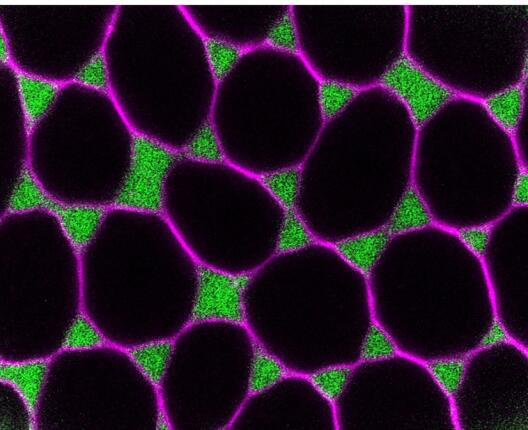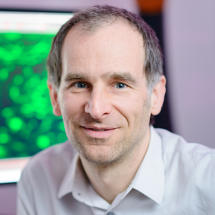Prof. Dr. Stefan Luschnig
Epithelial tissue dynamics and function

Development
Cell Biology / Molecular Biology
Membrane Protein Dynamics
Epithelial biology
Morphogenesis
Drosophila genetics
Our research addresses molecular, cellular, and developmental aspects of epithelial biology. We aim to understand (i) how epithelial cells build tubular structures of defined sizes and shapes and (ii) how epithelial barrier function is established and remodeled in normal development and during physiological or pathological processes. We use Drosophila as an accessible model to investigate how cellular behaviors (cell growth, cell rearrangements, cell shape changes) and mechanical forces contribute to the formation and plasticity of epithelial organs. In particular, we investigate the development of tricellular junctions (TCJs), which play key roles epithelial barrier formation, but are still poorly described in terms of their molecular composition and the dynamics of their assembly and maintenance. We address these questions using a combination of molecular, genetic, and quantitative imaging approaches. We recently developed a method to synchronize intracellular membrane trafficking in intact living animals. Using these tools, we visualize and analyze the routes of secretory proteins to their destinations in epithelial tissues.
Possible PhD projects include
- Dynamics of tricellular junction assembly and remodeling in the follicle epithelium.
- Acute manipulation and real-time visualization of polarized membrane trafficking in epithelial tubes.

Vita
- 1990 - 1996: Studies in Biology, University of Erlangen, Germany
- 2000: Graduation (Dr. rer. nat.) Max-Planck Institute for Developmental Biology, Tübingen, Germany
- 2000 - 2004: Postdoctoral researcher, Stanford University School of Medicine and Howard Hughes Medical Institute, USA
- 2004 - 2007: Research Group Leader, University of Bayreuth, Germany
- 2007 - 2015: Research Group Leader, University of Zurich, Switzerland
- Since 2015: Professor, University of Münster, Germany
Selected references
Camelo, C., Koerte, A., Jacobs, T., Hiesinger, P.R., and Luschnig, S. (2022). Tracheal tube fusion in Drosophila involves release of exosomes from multivesicular bodies. Journal of Cell Science, in press
Isasti-Sanchez, J., Münz-Zeise, F., Lancino, M., and Luschnig, S. (2021). Transient opening of tricellular vertices controls paracellular transport through the follicle epithelium during Drosophila oogenesis. Developmental Cell 56, 1083-1099.e5.
Wittek, A., Hollmann, M., Schleutker, R., and Luschnig, S. (2020). The transmembrane proteins M6 and Anakonda cooperate to initiate tricellular junction assembly in epithelia of Drosophila. Current Biology (30), 4254–4262.e4255.
Sauerwald, J., Backer, W., Matzat, T., Schnorrer, F., and Luschnig, S. (2019). Matrix metalloproteinase 1 modulates invasive behavior of tracheal branches during entry into Drosophila flight muscles. eLife pii: e48857. doi: 10.7554/eLife.48857.
Caviglia, S., Brankatschk, M., Fischer, E., Eaton, S., and Luschnig, S. (2016). Staccato/unc13-4 controls secretory lysosome-mediated lumen fusion during epithelial tube anastomosis. Nature Cell Biology, 18(7): 727–739.
Links
